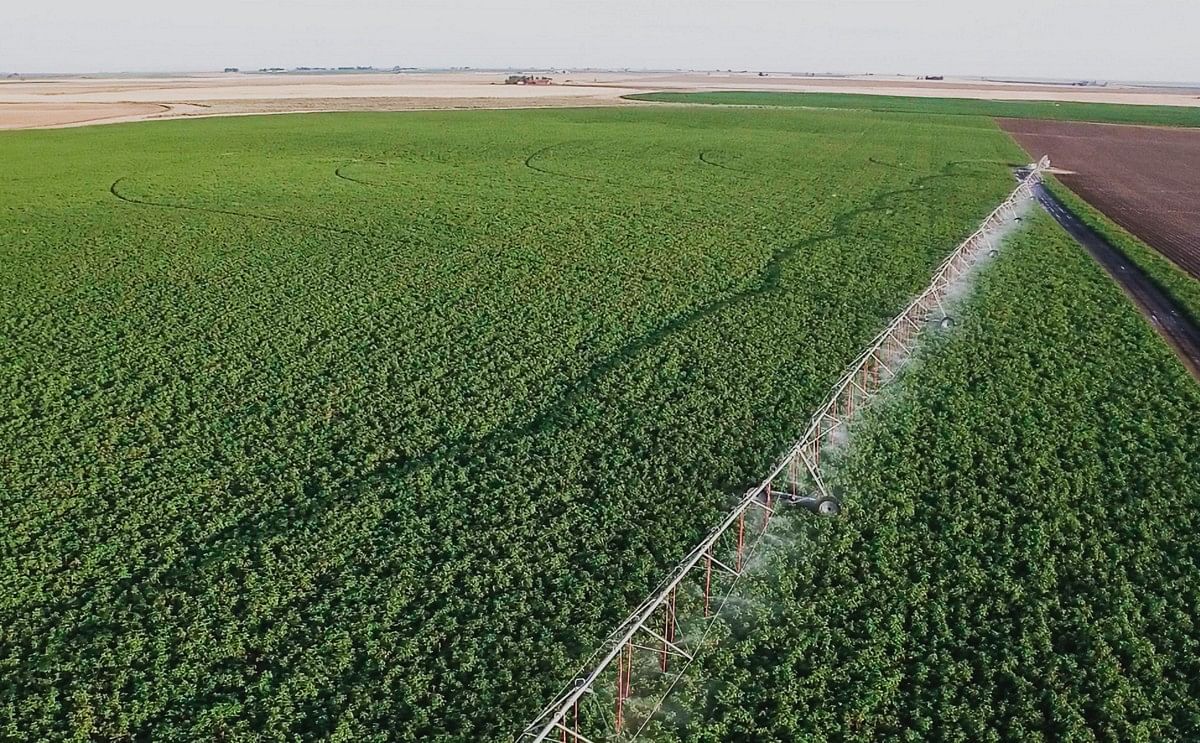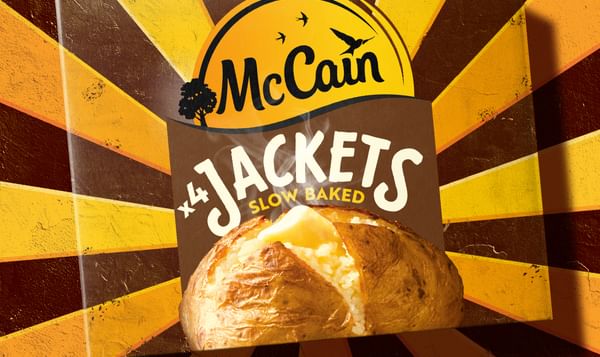Lamb Weston Reports Fiscal Second Quarter 2021 Results; Provides Update for Third Quarter of Fiscal Year 2021
Lamb Weston Reports Fiscal Second Quarter 2021 Results; Provides Update for Third Quarter of Fiscal Year 2021

Second Quarter 2021 Highlights
- Net sales declined 12% to $896 million
- Income from operations declined 28% to $140 million
- Diluted EPS declined 31% to $0.66
- EBITDA including unconsolidated joint ventures(1) declined 18% to $213 million
- Paid $34 million in dividends to shareholders and announced a 2% increase in quarterly dividend
- Plan to resume share repurchase program in January 2021
Third Quarter of Fiscal Year 2021 Business Update (for 4 weeks ended December 27, 2020)
- North America and Europe shipments were each approximately 85% of prior-year levels, and will remain soft during the remainder of the quarter as government-imposed social restrictions to contain the spread of COVID-19 and colder weather restrict restaurant traffic
- Improvement in international shipments expected to be mixed as governments employ differing approaches to battling the pandemic
Lamb Weston Holdings, Inc. (NYSE: LW) announced its fiscal second quarter 2021 results and provided a business update for the third quarter of fiscal 2021.
Tom Werner, President and CEO:
"We delivered solid financial results in the quarter, and we remain encouraged by the resiliency of consumer demand and the resourcefulness of our employees and our customers in adapting to this challenging environment. We are optimistic that the availability of COVID-19 vaccines will enable a gradual return to normalcy as the year progresses, but we expect to continue to face difficult and volatile operating conditions until the virus is broadly contained."
"Specifically, we expect demand will remain soft in the coming months, especially at full-service restaurants, as governments continue to impose broad social restrictions and as colder weather limits outdoor dining. That said, we expect demand at quick service restaurants and at retail outlets to offset some of that weakness."
"Despite these near-term pressures, we believe that restaurant traffic may approach pre-pandemic levels later this calendar year if vaccines and other measures are successful in helping to broadly contain the virus and restrictions on restaurants and other venues are lifted to permit a large-scale return to on-premise dining."
"In the meantime, our business fundamentals – pricing, capacity utilization, and potato supply – remain solid, and we continue to manage through the pandemic’s impacts on our manufacturing operations. We believe our recently announced increase in our quarterly dividend and the planned resumption of our share repurchase program reinforce our conviction in the long-term strength of the category and our business, as well as our ability to support customers and create value for our stakeholders."
YOY | First Half | YOY | ||||
Q2 2021 | Growth Rates | FY 2021 | Growth Rates | |||
Net sales | $ | 896.1 | (12%) | $ | 1,767.6 | (12%) |
Income from operations | $ | 139.6 | (28%) | $ | 275.3 | (24%) |
Net income | $ | 96.9 | (31%) | $ | 186.2 | (27%) |
Diluted EPS | $ | 0.66 | (31%) | $ | 1.27 | (27%) |
EBITDA including unconsolidated joint ventures(1) | $ | 213.2 | (18%) | $ | 415.0 | (16%) |
Summary of Second Quarter 2021 Results ($ in millions, except per share)
Q2 2021 Commentary
Net sales declined $123.1 million to $896.1 million, down 12 percent versus the prior year quarter. Volume declined 14 percent, predominantly reflecting decreased demand for frozen potato products outside the home following government-imposed restrictions on restaurants and other foodservice operations to slow the spread of the COVID-19 virus, as well as the effect of colder weather, which limited outdoor dining traffic across many U.S. markets.
In addition, the volume decline reflected the benefit of additional shipping days related to the timing of the Thanksgiving holiday in the prior year quarter. Price/mix increased 2 percent, driven by improved price in the Foodservice and Retail segments, and favorable mix in the Retail segment.
Income from operations declined $53.9 million, or 28 percent, to $139.6 million versus the year-ago period, reflecting lower sales and gross profit. Gross profit declined $61.6 million, driven by lower sales and higher manufacturing costs, which were largely due to incremental costs resulting from the pandemic’s effect on the Company’s manufacturing and supply chain operations, costs related to processing raw potatoes out of storage longer than in prior years, and input cost inflation.
The decline was partially offset by a $1.2 million change in unrealized mark-to-market adjustments associated with commodity hedging contracts, which includes a $5.1 million gain in the current quarter, compared with a $3.9 million gain related to these items in the prior year quarter.
Selling, general and administrative expenses ("SG&A") declined $7.7 million, largely due to lower incentive compensation expense accruals and a $3.5 million reduction in advertising and promotional expenses. The decline in SG&A was partially offset by investments to improve the Company’s operations and information technology infrastructure, which included approximately $5 million of non-recurring expenses (primarily consulting and employee training expenses) associated with implementing the first phase of a new enterprise resource planning ("ERP") system.
Net income declined $43.5 million to $96.9 million, primarily reflecting a decline in income from operations, partially offset by an increase in equity method investment earnings. The decline also includes $4.6 million of higher interest expense, which reflects an increase in average total debt resulting from the Company’s actions to enhance its liquidity position, as well as the write-off of $1.0 million of debt issuance costs related to paying off a term loan facility that was due in November 2021.
Diluted EPS decreased $0.29 to $0.66, primarily reflecting a decline in income from operations and higher interest expense, partially offset by an increase in equity method investment earnings.
EBITDA including unconsolidated joint ventures(1) declined $47.7 million to $213.2 million, down 18 percent versus the prior year period, as a result of a decline in income from operations, partially offset by an increase in equity method investment earnings.
The Company’s effective tax rate(2) in the second quarter of fiscal 2021 was 24.8 percent, versus 23.3 percent in the prior year period.The effective tax rate varies from the U.S. statutory tax rate of 21 percent principally due to the impact of U.S. state taxes, foreign taxes, permanent differences, and discrete items.
Q2 2021 Segment Highlights
Global
YOY | |||||
Q2 2021 | Growth Rates | Price/Mix | Volume | ||
Net sales | $ | 475.9 | (12%) | (1%) | (11%) |
Segment product contribution margin(3) | $ | 92.7 | (28%) |
Global Segment Summary (dollars in millions)
Net sales for the Global segment, which is generally comprised of the top 100 North American based quick service ("QSR") and full service restaurant chain customers as well as all of the Company’s international sales, decreased $63.7 million to $475.9 million, down 12 percent compared to the prior year period.
Volume decreased 11 percent due to the decline in demand for frozen potato products outside the home as a result of the pandemic’s negative impact on restaurant and other foodservice-related traffic in the U.S. and across the Company’s key international markets. The volume decline also reflected the benefit of additional shipping days related to the timing of the Thanksgiving holiday in the prior year quarter. Price/mix decreased 1 percent as a result of negative mix.
Global segment product contribution margin decreased $36.2 million to $92.7 million, down 28 percent compared to the prior year period. Lower sales volumes, higher manufacturing costs and unfavorable mix drove the decline.
Foodservice
YOY | |||||
Q2 2021 | Growth Rates | Price/Mix | Volume | ||
Net sales | $ | 241.1 | (21%) | 4% | (25%) |
Segment product contribution margin(3) | $ | 87.7 | (21%) |
Foodservice Segment Summary (dollars in millions)
Net sales for the Foodservice segment, which services North American foodservice distributors and restaurant chains generally outside the top 100 North American based restaurant chain customers, declined $63.8 million to $241.1 million, down 21 percent compared to the prior year period.
Volume decreased 25 percent due to the decline in demand for frozen potato products outside the home as a result of the pandemic’s negative impact on traffic at restaurants and non-commercial customers, such as lodging and hospitality, healthcare, schools and universities, sports and entertainment, and workplace environments, as well as the benefit of additional shipping days related to the timing of the Thanksgiving holiday in the prior year quarter.
Volume trends weakened during the latter weeks of the quarter, reflecting the effect on restaurant traffic, especially at full-service restaurants, of government-imposed social restrictions and colder weather on outdoor dining. Price/mix increased 4 percent, reflecting the carryover benefit of pricing actions implemented during fiscal 2020, partially offset by unfavorable mix as sales of Lamb Weston branded and premium products softened.
Foodservice segment product contribution margin decreased $23.6 million to $87.7 million, down 21 percent compared to the prior year period. Lower sales volumes, higher manufacturing costs, and unfavorable mix drove the decline, partially offset by favorable pricing.
Retail
YOY | |||||
Q2 2021 | Growth Rates | Price/Mix | Volume | ||
Net sales | $ | 140.7 | 7% | 7% | 0% |
Segment product contribution margin(3) | $ | 30.1 | 6% |
Retail Segment Summary (dollars in millions)
Net sales for the Retail segment, which includes sales of branded and private label products to grocery, mass merchant and club customers in North America, increased $8.6 million to $140.7 million, up 7 percent compared to the prior year period. Price/mix increased 7 percent, largely driven by favorable mix from increased sales of branded products.
Volume increased nominally as strong growth in shipments of premium and mainstream branded offerings, which have historically comprised approximately 40 percent of the segment’s volume, was offset by a decline in shipments of private label products, which reflects incremental losses of certain low-margin private label business, as well as the benefit of additional shipping days related to the timing of the Thanksgiving holiday in the prior year quarter.
Retail segment product contribution margin increased $1.6 million to $30.1 million, up 6 percent compared to the prior year period. Favorable mix and $2.4 million of lower advertising and promotional expenses drove the increase, partially offset by higher manufacturing costs.
Equity Method Investment Earnings
Equity method investment earnings from unconsolidated joint ventures in Europe, the U.S., and South America were $19.2 million and $15.0 million for the second quarter of fiscal 2021 and 2020, respectively. Equity method investment earnings included a $0.1 million unrealized loss related to mark-to-market adjustments associated with currency and commodity hedging contracts in the current quarter, compared to a $2.7 million unrealized loss related to these items in the prior year quarter.
Excluding the mark-to-market adjustments, earnings from equity method investments increased $1.6 million compared to the prior year period, largely due to improved performance in Europe, although demand in Europe softened during the latter half of the quarter, reflecting the negative impact on restaurant traffic at full-service restaurants related to governments reimposing social restrictions and reduced outdoor dining due to the onset of colder weather.
Cash Flow and Liquidity
For the first half of fiscal 2021, net cash from operating activities was $318.8 million, down $26.5 million versus the prior year period, primarily due to lower earnings. Capital expenditures, including information technology expenditures, were $53.7 million, down $53.7 million versus the prior year period.
The Company paid $67.2 million in cash dividends to shareholders and announced a 2 percent increase in its quarterly dividend. In the third quarter of fiscal 2021, the Company plans to resume its share repurchase program, which it temporarily suspended in late fiscal 2020 as a result of the pandemic’s effect on the operating environment.
On September 17, 2020, the Company amended its revolving credit facility to increase its capacity to $750.0 million and to extend the maturity date to September 17, 2023. In connection with the amendment, the Company used cash on hand to repay the outstanding $271.9 million term loan facility due in November 2021. At the end of the fiscal second quarter, no borrowings were outstanding under the amended revolving credit facility, and the Company had approximately $764 million of cash and cash equivalents.
Third Quarter of Fiscal 2021 Update
Set forth below is additional detail on the Company’s shipments for the first four weeks of the third quarter of fiscal 2021 through December 27, 2020:
- United States: Shipments were approximately 85 percent of prior-year levels.
- Shipments to large chain restaurant customers, which are composed of QSR and large full-service chain restaurants, were more than 95 percent of prior-year levels. The Company, which records shipments to these customers in its Global segment, anticipates this rate will largely continue for the remainder of its fiscal third quarter.
- Shipments to customers served by the Company’s Foodservice segment, which includes products ultimately sold to full-service chain and independent restaurants, regional and small QSRs, and non-commercial customers (e.g., lodging and hospitality, healthcare, schools and universities, sports and entertainment, and workplace environments) were 60 to 65 percent of prior-year levels, which is largely in line with what the segment realized during the latter weeks of its fiscal second quarter.
The Company believes shipments to full-service restaurants, in particular, will remain soft during the remainder of its fiscal third quarter as governments continue to impose broad social restrictions and colder weather limits outdoor dining. The Company also expects shipments to non-commercial customers, which have historically comprised approximately 25 percent of the segment, will remain soft for the remainder of its fiscal third quarter. - Shipments to customers served by the Company’s Retail segment were above prior-year levels, with strength in the Company’s premium and mainstream branded offerings partially offset by a decline of private label product shipments, which reflects incremental losses of certain low-margin private label business. The Company expects this rate will largely continue for the remainder of its fiscal third quarter.
- International:
- Europe: Shipments by the Company’s joint venture, Lamb-Weston/Meijer v.o.f. (“LWM”), were approximately 85 percent of prior-year levels. Demand softened during the latter half of the fiscal second quarter, reflecting the negative impact on restaurant traffic at full-service restaurants related to governments reimposing social restrictions and reduced outdoor dining due to the onset of colder weather. The Company believes these factors will further negatively impact shipments during the fiscal third quarter.
- Other Key Markets: Shipments to the Company’s key international markets, which are primarily in Asia, Oceana and Latin America, were mixed, and were largely softer than shipment rates realized during the latter half of the fiscal second quarter. Excluding shipments associated with the Company’s unconsolidated joint venture in Argentina, the Company records shipments to these markets in its Global segment.
- Europe: Shipments by the Company’s joint venture, Lamb-Weston/Meijer v.o.f. (“LWM”), were approximately 85 percent of prior-year levels. Demand softened during the latter half of the fiscal second quarter, reflecting the negative impact on restaurant traffic at full-service restaurants related to governments reimposing social restrictions and reduced outdoor dining due to the onset of colder weather. The Company believes these factors will further negatively impact shipments during the fiscal third quarter.
- The Company believes that the possibility of wide availability of government-approved COVID-19 vaccines by mid-calendar 2021 may allow governments to gradually ease broad social restrictions in their respective jurisdictions, which would likely have a favorable impact on restaurant traffic.
In the coming months, the Company anticipates facing challenging and volatile operating conditions until the virus is broadly contained, and that demand may soften, especially at full-service restaurants, as governments continue to impose broad social restrictions and as colder weather limits outdoor dining.
However, the Company believes that global restaurant traffic will improve through calendar year 2021, which will lead to overall frozen potato demand approaching pre-pandemic levels, on a run-rate basis, by the end of the calendar year.
The Company will continue to prioritize the health and welfare of its employees, maintain product safety, and continue to support its customers as they manage their supply chains and inventories.
The Company has taken actions, and will continue to evaluate various options, to lower its cost structure and maximize efficiencies in its manufacturing and commercial operations, including temporarily closing facilities and/or modifying production schedules to rebalance utilization rates across its manufacturing network.
The Company expects that it will continue to incur additional costs as a result of the pandemic’s impact on its operations, at least through the remainder of fiscal 2021.
These costs may include, but are not limited to:
- Costs to shut down, sanitize, and restart production facilities after a production employee has been infected by the virus;
- Production inefficiencies and labor retention costs arising from modifying production schedules, reducing run-times, and lower overall factory utilization;
- Costs to adopt and maintain enhanced employee safety and sanitation protocols, such as purchasing personal protection and health screening equipment and services;
- Costs related to processing raw potatoes out of storage longer than prior years; and incremental warehousing and transportation costs.
For all of fiscal 2021, the Company continues to expect:
- Interest expense, net, of approximately $125 million,
- Depreciation and amortization of approximately $190 million, and
- Cash used for capital expenditures, excluding acquisitions, of approximately $180 million.
End Notes
(1) | EBITDA including unconsolidated joint ventures is a non-GAAP financial measure. Please see the discussion of non-GAAP financial measures and the reconciliations at the end of this press release for more information. |
(2) | The effective tax rate is calculated as the ratio of income tax expense to pre-tax income, inclusive of equity method investment earnings. |
(3) | For more information about product contribution margin, please see the table titled “Segment Information” in this press release. |










